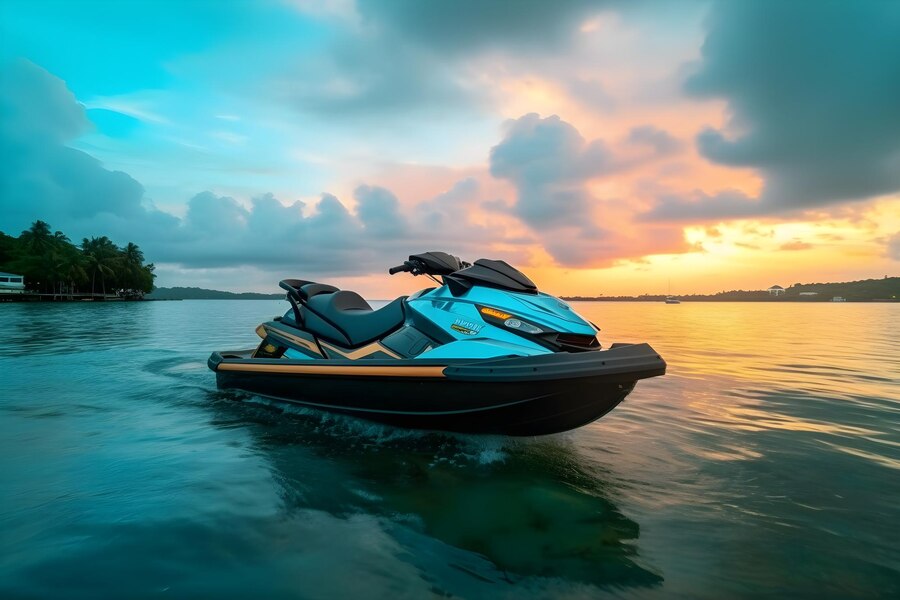In recent years, the world of water recreation has seen a surge in innovation, with manufacturers constantly striving to create products that offer convenience, portability, and most importantly, fun. One such innovation that has captured the imagination of water enthusiasts is the inflatable jet ski. Combining the thrill of traditional jet skis with the portability and ease of use of inflatable technology, these watercraft have carved out a niche in the market and are gaining popularity among adventurers and leisure seekers alike.
Understanding Inflatable Jet Skis
What are Inflatable Jet Skis?
Inflatable jet skis, also known as inflatable personal watercraft (PWC), are a type of watercraft that utilizes inflatable materials for their hull construction instead of traditional rigid materials like fiberglass or plastic. These watercraft typically consist of an inflatable outer shell, an engine, a propulsion system, and handlebars for steering.
Construction and Materials
The construction of inflatable jet skis primarily involves the use of durable, puncture-resistant materials such as PVC (polyvinyl chloride) or Hypalon. These materials are chosen for their ability to withstand the rigors of water use while still remaining lightweight and portable. The inflatable hull of the jet ski is often reinforced with multiple air chambers to enhance stability and safety in case of punctures.
Features and Components
Inflatable jet skis come equipped with a range of features and components similar to their rigid-hulled counterparts. These may include:
A powerful engine: Despite their inflatable construction, these watercraft are powered by robust engines capable of delivering thrilling speeds and performance on the water.
Propulsion system: Inflatable jet skis utilize jet propulsion systems, which draw water into a pump and expel it at high pressure to propel the craft forward.
Steering mechanism: Handlebars or a similar steering system allow riders to control the direction of the inflatable jet ski.
Seating: Most inflatable jet skis offer seating for one or two riders, depending on the model and size of the watercraft.
Storage: Some inflatable jet skis feature storage compartments for stowing personal belongings or equipment.
Advantages of Inflatable Jet Skis
Portability and Convenience
One of the most significant advantages of inflatable jet skis is their portability and ease of transportation. Unlike traditional jet skis, which require trailers or specialized racks for transport, inflatable jet skis can be deflated and packed into a compact carrying bag or case. This makes them ideal for travelers, outdoor enthusiasts, and those with limited storage space.
Ease of Storage
Inflatable jet skis take up minimal storage space when not in use. Once deflated, they can be stored in a garage, closet, or even the trunk of a car, eliminating the need for dedicated storage facilities or docking space.
Versatility
Inflatable jet ski are highly versatile and can be used in a variety of water environments, including lakes, rivers, and even the open ocean. Their lightweight construction and shallow draft make them suitable for exploring shallow or hard-to-reach areas where traditional watercraft may struggle to navigate.
Safety
Despite their inflatable construction, modern inflatable jet ski are designed with safety in mind. Multiple air chambers and durable materials help minimize the risk of punctures or leaks, while built-in safety features such as kill switches and lanyards ensure riders can quickly shut off the engine in case of emergency.
Challenges and Considerations
Durability
While inflatable jet ski are designed to be durable and puncture-resistant, they may not offer the same level of durability as their rigid-hulled counterparts. Sharp objects or rough terrain can potentially cause damage to the inflatable hull, necessitating repairs or replacement.
Performance
While inflatable jet ski offer impressive performance on the water, they may not match the speed and agility of traditional jet ski with rigid hulls. Additionally, their lightweight construction may make them more susceptible to wind and choppy water conditions, affecting stability and control.
Cost
Inflatable jet ski can be more expensive upfront compared to traditional jet ski, primarily due to the specialized materials and construction techniques involved. However, they may offer long-term cost savings in terms of transportation, storage, and maintenance.
The Future of Inflatable Jet Skis
Despite the challenges and considerations, the future looks promising for inflatable jet ski. Advances in materials science and manufacturing techniques are likely to result in even lighter, more durable inflatable watercraft with enhanced performance capabilities. Additionally, as environmental concerns continue to grow, the eco-friendly nature of inflatable jet ski—due to their reduced fuel consumption and emissions—may further contribute to their popularity.
Conclusion
Inflatable jet ski represent a compelling evolution in water recreation, offering a unique combination of portability, convenience, and fun. While they may not be suitable for every water enthusiast or every scenario, their versatility and innovative design make them a worthy option for anyone looking to experience the thrill of jet skiing in a whole new way. As technology continues to advance and consumer demand grows, we can expect to see inflatable jet ski become an increasingly common sight on waterways around the world.







